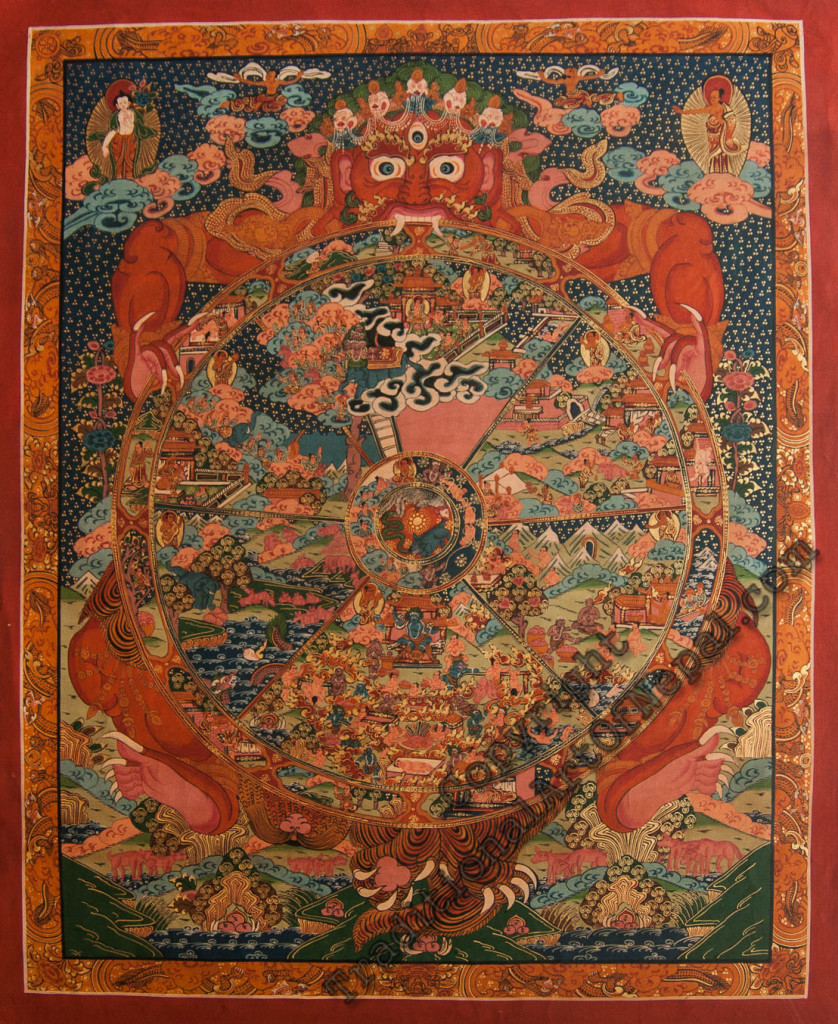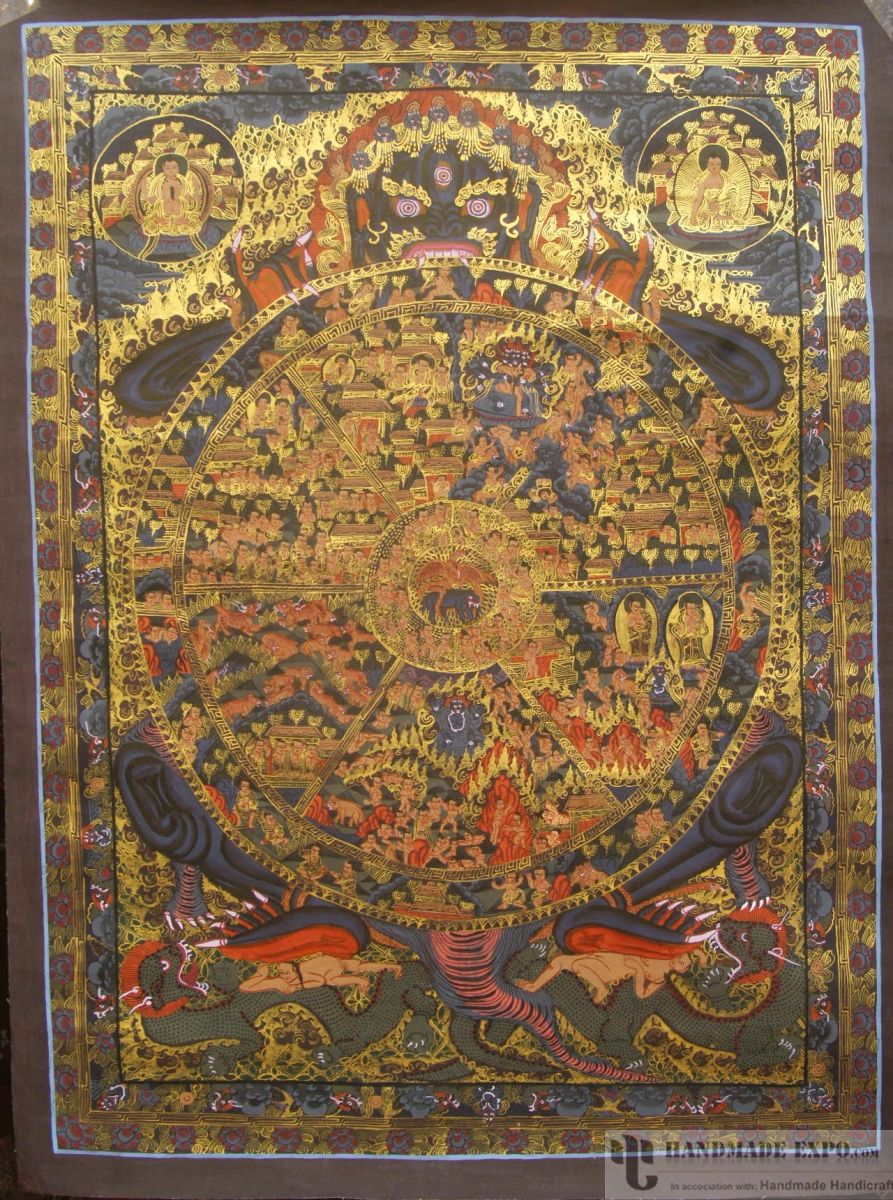

They also inspire us to cultivate compassion and wisdom, which are essential qualities for our spiritual growth and development. They serve as a reminder of the impermanence of life and the importance of living in the present moment. Wheel of Life or Samsara (Bhavacakra) Thangka paintings are not only beautiful but also have a deep spiritual significance. These processes are represented in the Wheel of Existence thangka. The result is a stunning work of art that captures the essence of Buddhist philosophy and spirituality. Life happens in a matrix of time, perceived experientially and understood. The artists who create these paintings are highly skilled and trained in the traditional techniques of Thangka painting, which involves using precise brushstrokes to create intricate designs and patterns. These paintings are usually made on cotton or silk, and the pigments used are derived from natural sources such as minerals and plants. The beauty of Wheel of Life or Samsara (Bhavacakra) Thangka paintings lies in their intricate detail and vibrant colors. The outer rim of the wheel is held by Yama, the god of death, and the spokes of the wheel represent the 12 links of dependent origination, which explain how our actions and karma lead to our rebirth. These include the human realm, the animal realm, the hungry ghost realm, the hell realm, and the god realm. The central image of the painting is a wheel, which is divided into different sections that represent the different realms of existence. The Wheel of Life or Samsara (Bhavacakra) Thangka paintings depict the cyclical nature of life, death, and rebirth, as well as the various realms of existence that we may inhabit during this journey. These paintings depict the cycle of life and death, and the various realms of existence that we may pass through in our journey towards enlightenment.

The Wheel of Life is dedicated to all animated beings who have not yet attained the first step of spiritual liberation which is referred to as Nirvana.Wheel of Life or Samsara (Bhavacakra) Thangka paintings are a popular and meaningful form of Buddhist art. But the meaning of this painting is to show the way out of all these worlds of suffering into the sphere beyond. Projected on one plane,they fill the whole inner sphere the Wheel of Life. It leads him or her through the twelve interwoven causes and their consequences to rebirth in one of the so-called Six Worlds.

The circular composition of the Wheel of Life guides the viewer from picture to picture along the black path or the white path. This fate is demonstrated by the Lord of Dead who holds the Wheel of Life in his claws he is a symbol of the transitory nature of all earthly phenomena.

Picture by picture it reminds us that everyone is always his or her own judge and responsible for their own fate, because, according to Karma, causes and their effects are the fruits of one's own deeds. It is a complex symbolic representation of samsara. The Wheel of Life describes the cause of all evil and its effects, mirrored in earthly phenomena just as it is experienced by every man from the cradle to the grave. Wheel of Life (Riduk) or Bhavacakra is the traditional representation of the samsaric cycle of existence. This illustrates the essence of the Buddhist teachings, the Four Truths: the existence of earthly suffering, its origin and cause, the ending or prevention of misery and the practice path to liberation from suffering. This piece depicts the Wheel of Life which plays a very important role in Tibetan Buddhist Philosophy. This beautiful hand painted Thangka is from Kathmandu, Nepal.


 0 kommentar(er)
0 kommentar(er)
